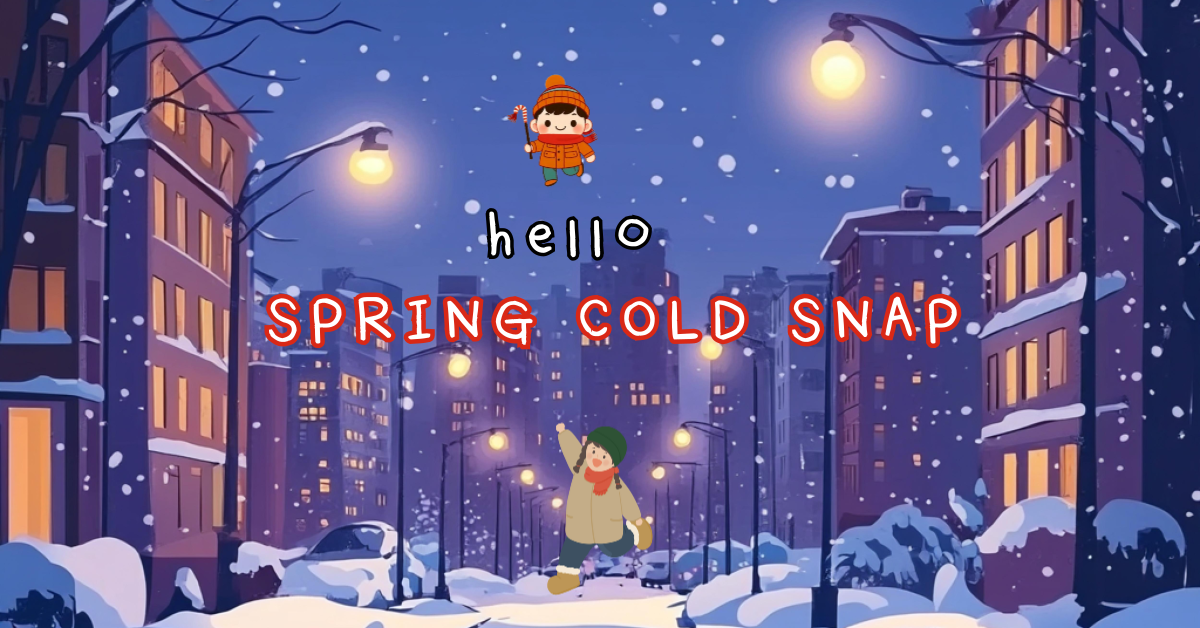Korea’s spring is known for its warm weather and beautiful cherry blossoms, forsythias, and azaleas in full bloom. However, spring in Korea is not always warm. One of the most distinctive weather phenomena during this season is the spring cold snap, known as Kkot-saem Chuwi in Korean. Many visitors, especially foreigners, may be caught off guard by the sudden drop in temperature. If you’re planning a trip to Korea in spring, it’s essential to be prepared for this unexpected chill.
What is the Spring Cold Snap?
The Kkot-saem Chuwi refers to a sudden and temporary cold spell that occurs when flowers begin to bloom in spring. The name comes from the Korean words "Kkot" (flower), "Saem" (jealousy), and "Chuwi" (cold), meaning "a cold spell that seems to be jealous of the blooming flowers."
The cold snap typically occurs between mid-March and early April, though it can sometimes last until mid-April. During this period, daytime temperatures may feel warm, but mornings and nights can drop below freezing. In some cases, snow or strong winds can accompany the sudden drop in temperature.
This phenomenon is caused by the temporary strengthening of the Siberian high-pressure system, which brings cold air back down over the Korean Peninsula. The cold spell usually lasts for a few days before temperatures rise again. However, the drastic temperature fluctuations can pose health risks, making it essential to be mindful of how you dress and take care of yourself during this time.
Effects of the Spring Cold Snap
● Health Risks
- Sudden temperature changes can lead to colds, flu, and worsened allergies.
- The elderly, young children, and travelers with weak immune systems should take extra precautions.
- The dry air may cause skin irritation and dehydration.
● Agricultural Impact
- Blooming flowers and sprouting plants can freeze or wither due to the cold.
- Farmers, particularly fruit growers, may experience reduced yields.
● Daily Life Disruptions
- People who dress lightly for spring may find themselves unprepared for the unexpected cold.
- Outdoor activities like hiking or sightseeing may be affected by the chilly winds and temperature drops.
What Foreign Travelers Should Know
If you are visiting Korea during the spring cold snap, failing to prepare can make your trip uncomfortable. Keep the following tips in mind for a more enjoyable and hassle-free experience.
● Clothing Tips
- Forget the stereotype that spring in Korea is always warm—layered clothing is the best approach.
- Light padding, windbreakers, and lightweight coats are must-haves.
- As temperatures drop significantly in the mornings and evenings, scarves, gloves, and hats can come in handy.
● Public Transport & Indoor Heating
- Subway stations and bus stops can be quite chilly, even though the subway and buses themselves are well-heated.
- Cafés and restaurants tend to have strong indoor heating, so wearing layers that are easy to remove is recommended.
● Health Precautions
- Stay hydrated and boost your immune system with Vitamin C.
- Carry hand sanitizers or wet wipes to maintain hygiene.
- On particularly cold days, limit outdoor exposure and spend more time indoors.
● Recommended Destinations
Despite the cold, spring remains one of the most beautiful seasons in Korea. Here are some great places to visit:
- Outdoor spots: Gyeongbokgung Palace, Changdeokgung Palace, Namsan Seoul Tower, Han River Park, Jeju Island
- Indoor activities: Korean-style sauna (Jjimjilbang), traditional tea houses, National Museum of Korea, Modern Art Museums
● Check the Weather Forecast
- Korea’s weather can change rapidly, so check the Korea Meteorological Administration (KMA) or Naver Weather before heading out.
Stories & Cultural References About the Cold Snap
The spring cold snap is not just a weather event—it is deeply embedded in Korean history and culture.
● Hwang Hui’s Historical Tale
During the Joseon Dynasty, Prime Minister Hwang Hui reportedly continued working for the country despite the severe cold snap. His dedication has become an inspirational story, emphasizing perseverance through temporary hardships.
● Poetry About the Spring Cold Snap
The renowned poet Lee Hae-in’s poem "Flower Jealous Wind" describes the bittersweet nature of the cold snap, comparing it to the fleeting presence of an old friend, signifying both warmth and unexpected chill in life.
Spring Cold Snap Forecast for 2025
According to the Korea Meteorological Administration (KMA), the spring cold snap is expected to return in mid-March 2025. There may be sudden temperature drops, strong winds, and possibly even snow in certain regions. Travelers should check the latest weather updates and pack accordingly before their visit.
How to Prepare for the Cold Snap
- Wear layered clothing to adjust to changing temperatures.
- Maintain good health by drinking plenty of water and eating nutrient-rich foods.
- Farmers should take protective measures to prevent crop damage.
- Check weather forecasts before heading out to avoid unexpected cold.
Final Thoughts
The spring cold snap is one of Korea’s unique seasonal weather patterns, adding an extra layer of character to the transition between winter and spring. For foreign visitors, the sudden temperature drop may come as a surprise, but with the right preparation, it won’t interfere with enjoying Korea’s breathtaking spring landscapes.
By keeping warm and taking care of your health, you can fully embrace the beauty of Korea’s spring, from cherry blossoms to historical sites, without the inconvenience of unexpected chills. Be prepared, check the weather, and enjoy your trip to Korea!


